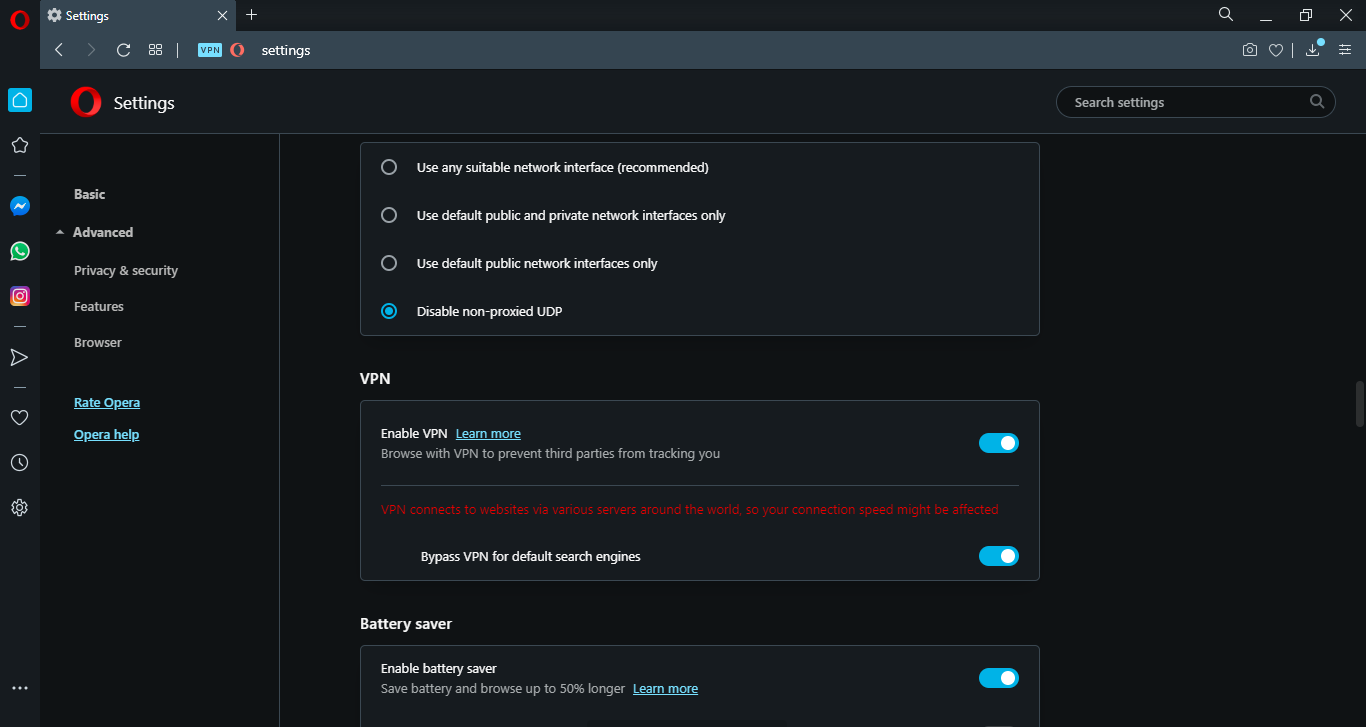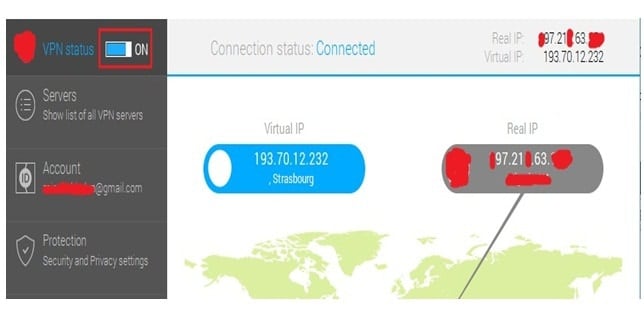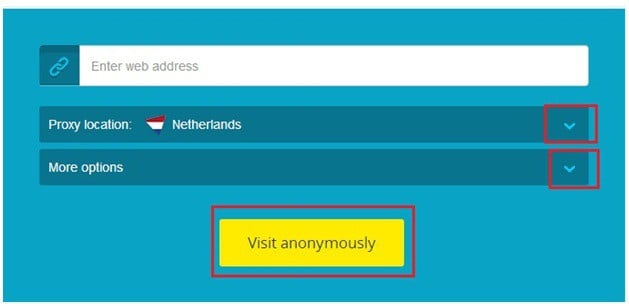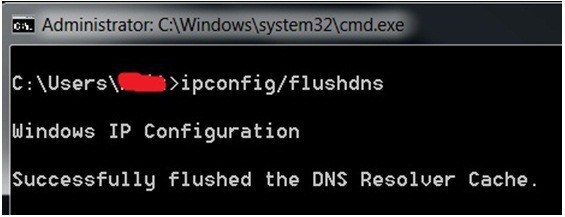- Being able to quickly find the information you’re looking for is essential in today’s fast-paced information-flooded world.
- Certain websites have various restrictions in place, especially location-specific restrictions, preventing users from accessing the content.
- If you keep getting error messages informing you that certain websites are not allowed, visit this VPN Unblocking section.
- Bookmark our Web Browsers Hub too for more guides that will save the day when you can’t browse the Internet.

It is not out of place to encounter restrictions when trying to access some websites that you like.
The error message This website is not allowed can pop-up when a user is browsing from a blocked region or from behind a firewall.
This is not a scenario that is not resolvable and the following steps offer the way out from this browser error.
What can I do if getting This website is not allowed error?
1. Switch to another browser
It’s really annoying when particular websites are blocked and you seem to be unable to access them. To correct the issue, install the Opera browser.
Even though its VPN is unlimited and completely free, rest assured that it successfully disguises your IP address and location for more privacy and unrestricted website access.
To activate Opera’s VPN for the first time, you need to enable it in Menu > Settings > Privacy. Up to this point, you will see an icon on the address bar showing the VPN status.
Even if it connects to servers around the world and your network connection might be affected, rest assured that you won’t even notice the difference.

Opera
To avoid getting the same error that states This website is not allowed, download Opera. You just need to activate the free VPN!
Get it free Visit website Read more
2. Bypass website’s regional restrictions with VPN
- Download the VPN software of choice from any trusted source.
- Sign up or Sign in (if a user account already exists), if it is required.
- Activate the VPN and a random secure server location will be selected. As an option, there might be a need to choose the location of the encrypted server of interest.
Region-restricted online content is otherwise referred to as geo-blocked content, and this may be responsible for your inability to gain access to the content of a website.
If the site of interest contains content restricted to a particular region, you may need to unblock the website to gain access to its content using a Virtual Private Network.
A VPN is a very reliable way to access geo-blocked websites because it makes it possible for the user to tunnel traffic using encrypted connections from various locations.
If the user intends to access UK-based services from Yemen, a UK-based server with enough uplink and downlink will be needed.
That is what VPN typically offers the discerning user. Some VPN servers may be free, but generally, they are paid services.
Some recommended VPNs include TunnelBear, StrongVPN, HidemeVPN, and VPN Unlimited. It is recommended to use the VPN only when accessing geo-restricted websites.
A typical example of how this works is demonstrated using VPN software. Alternatively, an online VPN service can be used by just pasting the link to the website in the URL block.
To access an online VPN service:
- Visit hide.me/en/proxy or any other secure proxy websites such as kproxy or zend2.
- Paste the link to the site in the address bar.
- Select Proxy location and security options as you wish from the drop-downs.
- Click Visit anonymously. The website should now be unblocked/allowed.
3. Check Firewall settings
- Press WinKey + S or Q to bring up the search bar.
- Type in Firewall and right-click to open.
- Check Windows Firewall state to see if it is on or off.
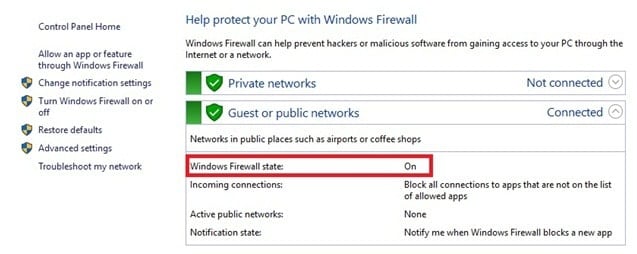
- Check the status of the browser you are trying to use to access the internet by clicking Allow an app or feature through Windows Firewall. The Allowed apps and features window will appear.
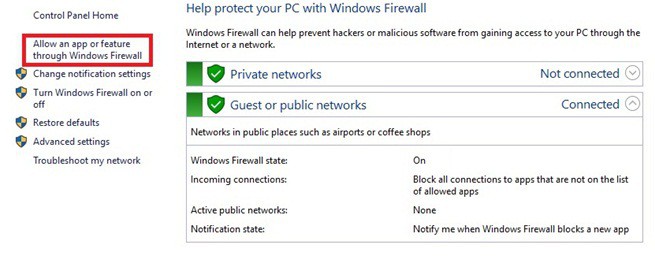
- Suppose Google Chrome or Firefox browser is what the user has installed, and neither is included in the list of Allowed apps and features, click on Allow another app to add the browser to the list.
- The Add a Program window will come up.
- Click on Browse, navigate to the browser software directory.
- Double-click on exe or Firefox.exe.
- Click Add.
- Ensure that the three boxes are checked. Click Ok to add the browser to the list of allowed applications.
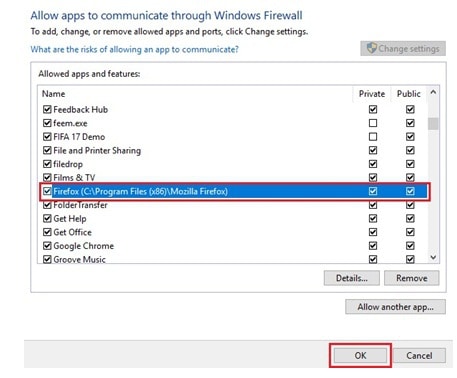
- Retry the website using the browser that is now added to the Allowed apps and features list and the site should open.
The primary function of a firewall is to control how programs access the web.
If a particular software or browser is not permitted by Firewall to establish Internet connections, This website is not allowed error message will show up whenever an attempt is made to load a particular website using that software or browser.
For Microsoft Windows users, follow the above steps to configure the Windows firewall.
4. Check DNS settings and clear the entire cache
- Press Windows key + R, and type in cmd in the search box.
- Click Ok to launch Windows Command Prompt.
- In the Command Prompt screen, type in ipconfig/flushdns and press Enter.
This command will ensure that all DNS data for previously visited sites are flushed, and new connections established.
Ensuring that the DNS server address is entered correctly will do a great deal of help in accessing websites that are not allowed.
Therefore, changing the DNS server appropriately on the device or router may just be what is needed.
It is recommended to make use of OpenDNS or Google Public DNS as an alternative to the default DNS server of your Internet Service Provider.
This is preferred as they are generic and can retrieve just any website. Better still, DNS services such as Unblock-Us and UnoDNS can be put to use.
If there has been a recent switch from Google public DNS or Open DNS server to that supplied by an ISP, clearing the DNS cache might as well help to solve This website is not allowed issue.
5. Remove the site-blocking extensions
Is it possible that a website blocking extension has been installed in the device browser unknowingly? Here’s what you need to do:
- Take a careful look at the extensions installed in your browser from the extension tab.
- Completely remove any suspicious additions that you think might be responsible for this problem and if need be, go on to install Unblocking browser extensions.
- Having taken these steps, retry the website and access should now be granted.
6. Review parental controls/browser exception list
Was any parental control installed at any point in time? Then, it is time to turn it off as it might be responsible for blocking some websites.
Also, try including in the browser exception list, the particular URL that is having connectivity issues.
The exception list menu can be located under the advanced settings menu for most browsers (IE, Safari, Firefox, and Chrome).
At this stage, the user might want to try the last possible thing; restarting the computer or device and the router may become necessary.
After this step, retry loading the website. If these tips do not produce the desired results, the user should consider putting a call through to the customer care of the Internet Service Provider to log a complaint.

